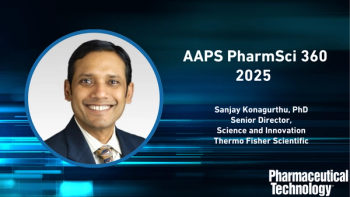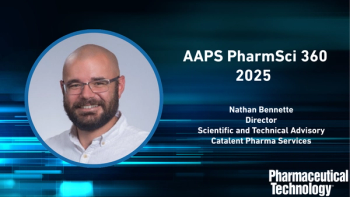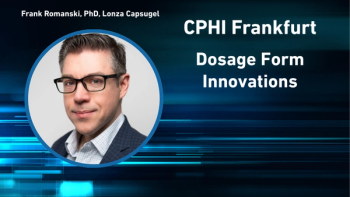
Improving the Economics of Monoclonal Antibody Separation
Advances in monoclonal antibody separation technologies are largely driven by the need to increase efficiencies and reduce cost.
While monoclonal antibodies (mAbs) are high-value therapeutic products, the expectation of biopharmaceutical manufacturers is that costs of the processes involved in their separation and purification will come down from current levels. Conventional technologies are designed to be effective for the purification of mAbs coming from low titer upstream processes and are not easily adapted to the higher productivity systems that are more common today. Several new technologies have thus been introduced or are being evaluated by the industry to achieve more efficient and cost-effective commercial-scale separations.
To be effective, all mAb separation technologies must first be reproducible, well-controlled and robust, and any sources of variability must be well understood, according to Paul Jorjorian, manager of purification development with Gallus BioPharmaceuticals. “Such separations must provide the scientifically appropriate purity, activity, yield, impurity profile, viral clearance, bioburden and endotoxin removal, host-cell (expression system) protein and residual DNA removal, and meet international leachable and extractable compliance requirements in order to ensure patient safety,” explains Molly S. McGlaughlin, vice-president of business development for Natrix Separations.
For biosimilar mAbs, which are predicted to become increasingly common according to Günter Jagschies, strategic customer relations leader at GE Healthcare Life Sciences, separation technologies have the additional need to stay within the range of the critical quality attributes of the original mAb, time after time, in a robust fashion. “Safety and efficacy cannot be compromised and a process will not be approved by regulatory bodies if it does not meet this essential characteristic,” he says.
Ideally, adds Andy Herbert, vice-president of development for PolyBatics, antibody separation technologies are also generic platforms that avoid the need for re-invention for each specific product.
Beyond meeting these performance and quality criteria, commercial antibody separations must also make good business sense. To that end, they must be both economical and scalable in order to meet market demands. “Scalability, flexibility, and redundancy of supply are business requirements; a company must be able to ensure that it can supply the market, regardless of fluctuations in demand, particularly when the product is a first-in-class molecule or a molecule for an orphan or fast track indication,” McGlaughlin notes. In addition, as with any other pharmaceutical manufacturing processes, all environmental, health, and safety requirements must be met.
Challenges
One of the challenges currently facing antibody manufacturers is the fact that conventional methods for the separation of mAbs are limited by their need to operate at low low titers. “As a consequence, very large volumes of reagents and cleaning solutions are needed, which contribute significantly to the overall cost of the process,” Herbert comments. Adds McGlaughlin: “Traditional methods have been slow to adapt to the scientific development in upstream productivity and high titers.”They have slow flow rates that do not enable efficient processing of large amounts of material. In addition to the high operating cost of these systems, they also require a high level of capital investment in equipment, significant labor costs, and the need to maintain a large resin inventory, and also present a risk of contamination.
Limitations are becoming apparent when individual steps in the process are optimized independently and bottlenecks appear as a consequence, according to Jagschies. He points out that “with higher cell mass and increased product concentrations, membrane areas in any filtration step need to go up to maintain filterability of unwanted debris or particulate matter and sufficient throughput of the mAb product-containing volumes. Centrifuges typically used in mAb processes are also facing issues with clarifying high biomass cell culture broth from the bioreactor to the same levels as before the upstream improvement. Chromatography steps are likewise challenged with increasing protein mass per batch, and larger purification installations may be needed to manage the bioreactor output.”
Complicating this situation is the increasing number of biosimilars being introduced to the market, which by definition require lower manufacturing costs. Both generic and name-brand mAb manufacturers are now looking to reduce the cost of goods by adopting more efficient technologies. In addition, the patient populations are smaller, with many therapeutic antibodies designed for very targeted and specific indications.
Evaluating technologies
“Flexible technologies that not only reduce the material cost of goods, but also improve facility utilization, reduce labor requirements, better ensure that quality assurance requirements are met, and enable quick turnovers between batches or products are being considered and are the true drivers in separation technology,” asserts McGlaughlin (see Figure 1). Herbert agrees. “New technologies employing single-use equipment components that obviate cleaning, and the use of chromatographic media such as ion exchange and mixed-mode resins, are approaches that attempt to reduce cost contributions.”
Another specific technology of interest is depth filtration, according to Jorjorian. “As the industry requires the production of smaller-volume, higher-potency, and lower-demand products and shifts from 5000-L to 20,000-L stainless-steel production facilities to smaller more nimble 500-L to 2000-L facilities, the driver is there to move from centrifugation to depth filtration. Depth filtration offers reduced cleaning and cleaning validation, decreased product changeover times for multiproduct facilities, robust scale-down models, and massively reduced capital costs.”
The development of low-cost Protein A (ProA) is also of interest, because ProA typically accounts for one-third to one-half of the downstream raw material costs, according to Jorjorian. “Recently, comparable products have come on the market at one-third the cost, which can be of particular value for small to mid-sized companies that can’t leverage ProA resin suppliers for preferred pricing.” He also believes that continuous chromatography will help drive down the cost of the ProA resin. “We are definitely keeping our eye on continuous processing, as it can also allow for a more consistent purification process, because column loadings and other process parameters always remain constant.”
Flocculation and precipitation approaches have found utilization in impurity removal, but they have most power when they can be applied to concentrate the drug molecules themselves, according to Herbert. “There are promising approaches (e.g., using caprylic acid) for monoclonal antibodies that have potential to simplify processes; in general, though, these remain less commonly applied than conventional platforms such as affinity chromatography,” he observes.
Jagschies also believes that flocculation approaches have shown the greatest promise in helping the filterability of more challenging solutions coming from the bioreactor. “This approach supports elimination of the centrifuge in the process, and thus supports the introduction of fully single-use processing (single-use centrifuges are not available or accepted yet).”
Membrane chromatography and virus filtration are also widely used and offer the attractive advantages of high effectiveness, reliability and scalability. Anion-exchange membranes operated in a flow through modality are well-established for the reduction of DNA and host cell protein contaminates, according to Jorjorian. The introduction of mixed modal or salt tolerant membranes has somewhat addressed the issue of inhibited binding under high salt conditions. There are also certain applications where it is beneficial for the target protein to bind and elute from the membrane. It should be noted, though, that the relatively small device size of membranes can be a challenge. “Even so, membranes offer a cost-effective alternative to chromatography as long as reasonable capacities can be achieved,” Jorjorian concludes. He also notes that single-use membranes offer more control over the cost of goods and reduce operational effort including cleaning validation, column packing, buffer preparation, and more.
One new membrane technology comes from Natrix. Its three-dimensional hydrogel membrane provides significantly enhanced capacity and flow rate. It is a flexible, modular, multi-cycle, single-use disposable technology that can process large amounts of material in a short period of time, according to McGlaughlin.
She also points to two other mAb separation technologies that are attracting interest. Monolith technologies and simulated moving bed systems (or continuous chromatography, and also known as BioSMB) or have both been proven on the research scale but have experienced slow adoption for cGMP manufacture for various reasons, McGlaughlin notes.
Looking ahead
Looking into the future, many of these technologies are expected to be further enhanced and eventually more widely adopted for monoclonal antibody separation. Herbert expects to see a continued focus on improving the economics of monoclonal antibody manufacturing. “To achieve this goal, PolyBatics has developed a unique technological approach to reducing the cost of affinity chromatography, one of the main components of the purification platform most commonly used to manufacture monoclonal antibodies. This technology can create low-cost affinity chromatography media ideally suited for the cost-effective manufacture of monoclonal antibodies and biopharmaceuticals in general,” he says.
The key technologies of note for Jorjorian are membrane chromatography, continuous processing, expanded bed separations, and precipitation of the target IgG and impurities. Meanwhile, McGlaughlin expects to see increasing application of single-use, disposable technologies, and multicycle technologies, higher flow rates and binding capacities, and multiproduct processes with smaller footprints. “Adoption of these types of technologies will lead to the implementation, ultimately, of continuous processing in truly single-use facilities that are flexible and offer significant savings in the cost of goods,” she concludes.
For Jagschies, the future will be about integration. “We will not see as much of ‘what can a science discipline do to improve its part’ but instead more of ‘what is needed to make the overall process deliver safety, efficacy, and quantity, but also a good operational economy’. These two approaches are not always the same, as the former allows the creation of bottlenecks and risks, whereas the latter is more likely to lead to a harmonized design with a business focus to it, i.e., aligned to market demand. As a result, we will see the smart combination of technology rather than the individual use of isolated technologies.” Those combinations will include, in addition to continuous manufacturing, more powerful sensor and at- or inline analytical technologies, and technologies that address purification challenges at the level of selecting the producer cell clone.
Newsletter
Get the essential updates shaping the future of pharma manufacturing and compliance—subscribe today to Pharmaceutical Technology and never miss a breakthrough.




